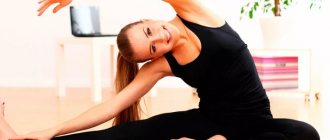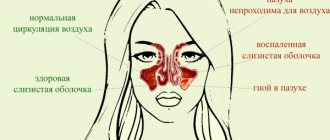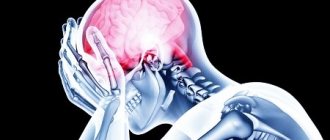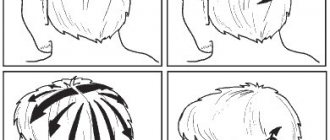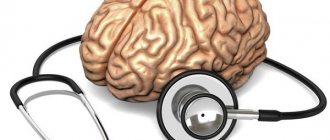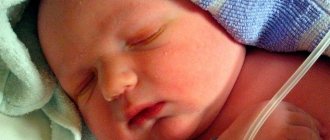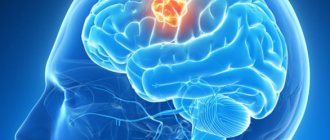In this article we will look at why there is pulsation in the ears.
The ear is a hearing organ. It performs important functions in the human body. This organ ensures the perception of sounds, as well as orientation in space.
Description of the pathology
Ripple in the ear is a symptom of a pathological change in the auditory analyzer, the cause of which must be urgently determined in order to begin therapy in a timely manner. When people constantly have pulsating ears, they become irritated and nervous, have difficulty sleeping and eating, and become depressed.
Such signs ultimately lead to major health problems: hearing deterioration and mental disturbances. Let's talk about the main reasons for the appearance of pulsation in the ears, and, in addition, we will find out what symptoms can accompany such a condition, and find out how to get rid of this ailment.
Preventive measures
The main measure to prevent pulsation in the ears is to support the normal functioning of the cardiovascular system , since most often the pathology is associated with increased pressure or tone of the vascular wall.
Photo 2. Regular physical activity will help avoid unpleasant symptoms. Source: Flickr (Method Fitness)
To support the functioning of the heart and blood vessels, you need to eat right (a balanced diet will save you from obesity and atherosclerosis), and give regular physical activity to your body. This is not necessarily exhausting training in the gym; daily walking and refusal to use the elevator will already be a good prevention of cardiovascular pathologies.
To protect your ear from inflammation, you should wear a hat in cold, windy weather and take measures to strengthen the immune system: a sufficient amount of protein, vitamins and microelements in your daily diet and giving up bad habits.
Etiology of the disease
So, why do my ears throb?
The causes of pulsation are very diverse. These include:
- Infectious and inflammatory diseases of the auditory analyzer.
- Presence of closed and open head injuries.
- The occurrence of vascular diseases in the form of atherosclerosis, hypertension, various vascular malformations, and so on.
- The influence of stressful situations.
- The appearance of neoplasms of the head and neck.
- The appearance of wax plugs in the ears.
- Long-term therapy with antibiotics, especially ototoxic ones.
- Long-term use of non-steroidal anti-inflammatory drugs.
- The influence of a hormonal surge during pregnancy, and, in addition, against the background of menopause.
- Degenerative and dystrophic changes in the spine.
- Daily use of headphones.
- Pressure surges associated with air travel, diving, climbing mountains, and so on.
- The beginning of the natural aging process of the body.
Why the ears pulsate is of interest to many.
Heart and vascular diseases: description of symptoms
People who suffer from heart disease can often experience tinnitus that sounds like a heartbeat. The pulsation can be especially acute when the patient climbs stairs and bends forward. A person may feel pressure in the head, feeling short of breath along with noise in both ears.
Why does the right ear or left ear pulsate?
Main reasons
The causes of pain are quite varied. Accordingly, treatment tactics may vary in each specific case. What causes sharp shooting pain in the ear?
Ear disease - chronic otitis media
Most often, shooting pain is provoked by bacteria and pathogenic viruses that enter when blowing the nose forcefully. In this case, a disease such as otitis media occurs. It is characterized by the following symptoms:
- sharp pain on one side;
- headache;
- sensation of shooting without pain;
- bloody or purulent discharge;
- hearing loss up to partial loss;
- nausea;
- plugs (laying).
To treat acute otitis, use a cotton swab soaked in boric alcohol (it is placed in the ear canal).
In the case when there is discharge of blood or pus, painless shooting in both ears, the temperature rises, you need to contact an otolaryngologist and be treated with painkillers and antibacterial drugs.
Labyrinthitis
This disease is provoked by viral infections: chickenpox, measles, influenza, mumps.
Labyrinthitis can cause severe complications, so it should be treated by a doctor with proven medical means. Dry heat and compresses help to quickly cure ailments.
Mastoiditis
Mastoiditis is inflammation of the mastoid process. Develops against the background of untreated otitis media.
Mastoiditis can be suspected by an increase in body temperature to 38-40 degrees, loss of appetite, insomnia, headache, throbbing and shooting.
When you press on the mastoid process, a sharp pain occurs, and the skin in this place is red and swollen.
The pathology is dangerous due to complications such as meningitis, labyrinthitis, paralysis of the facial nerve, and suppuration in the neck.
Caries with inflammation of the dental nerve
If an adult or child has ear pain, it may be due to a tooth. When discomfort is caused by inflammation of the dental nerve, a person feels pulsations that intensify when pressed.
This is usually observed with caries of the outer teeth and inflammation of the wisdom teeth. Many people complain: “my ear hurts a lot when I chew.” This has something to do with teeth.
Arthrosis of the jaw joint
This is a pathology of the temporomandibular joint, leading to dystrophic changes in its tissues. Arthrosis of the TMJ is characterized by persistent dull and aching pain in the joint, crunching, clicking, limited mobility, and stiffness. It is difficult for the patient to open his mouth, and when chewing, the pain may radiate to the ears.
On the affected side, the ear sometimes shoots, numbness, tingling of the skin, and headache are felt.
Hypertension
In the presence of hypertension, vascular tone in people is disrupted, and the capillaries, in turn, become overfilled with blood, impeding systemic blood flow. The sound of a kind of friction of blood through the vessels can be perceived by a person as a pulsating noise. This creates a feeling as if the heart is pulsating in the ear. If a patient develops a hypertensive crisis, the blood supply becomes uneven. This in turn excites the nerve endings, which is why pulsating noise occurs in the ears.
Diagnostic methods
At the Clinical Brain Institute, a complete diagnosis is carried out, which examines all possible causes of pain in the right ear and right side of the head. The initial appointment is carried out by a therapist. Based on anamnesis (medical history), examination and questioning, the patient receives a referral to a specialist. To exclude diseases of the hearing organ or paranasal sinuses, consultation with an otolaryngologist is necessary, or if a neurological picture is present, a neurologist. If you have high blood pressure, it is recommended that you undergo regular scheduled examinations with a physician.
Noise without pain
Disturbances in the structure and functioning of large arteries, along with their narrowing or dissection, change the speed and direction of blood flow, which beats against the walls of the vessels. Patients may claim that their ears are throbbing, but they do not hurt. Small aneurysms manifest themselves as pulsations in the head. The larger the size of the protrusion, the more pronounced these unpleasant sensations are.
Why else is there pulsating in the ears?
Diagnosis of the causes of pulsation in the ears
Diseases of the cardiovascular system
Often people suffering from heart problems feel pulsation in their ears, especially when climbing stairs or bending forward. Even with minor activity, the patient experiences a feeling of lack of air, noise and pulsation in the ears.
Hypertension
With this disease, vascular tone is disrupted, capillaries become overfilled with blood, and blood flow becomes difficult. And a person perceives the sound of the so-called “friction” of blood through the vessels as pulsation. Patients often describe this sound as “like a heart pounding in their ears.”
Atherosclerotic processes
Leading to loss of elasticity of the vascular wall, which begins to contract in a different rhythm with the heart. The patient hears such a pathological pulsation.
People suffering from atherosclerosis often experience dizziness, fatigue, and memory problems.
Disturbance of the structure and functioning of large arteries and veins
The narrowing or dissection of the veins leads to the fact that they hit the walls of the vessels loudly; patients with this pathology claim that they experience a feeling of pulsation in the ear, but there is no pain.
Diseases of the ENT organs
Unfortunately, absolutely any part of the ear can become inflamed, including the Eustachian tube, which connects the ear to the nasopharynx.
Pathological changes distort sound waves and their perception. With otitis media, internal noise increases, causing blood pulsation. The patient experiences pulsation in the left ear due to left-sided inflammation of the auditory analyzer. If otosclerosis develops, patients also complain of dizziness and tinnitus.
Labyrinthitis is an inflammation of the inner ear, which is associated with the penetration of infection from chronic foci in the body. The main manifestations of the disease are: autonomic disorders, pallor, dizziness, hyperhidrosis. Irritation and death of sound receptors provokes the appearance of pulsation in the ears.
Hypersecretion of earwax often ends in the formation of cerumen plugs, which must be disposed of in a timely manner.
Earwax blocks the ear canals, causing hearing impairment and pathological pulsations.
Traumatic injuries
Brain injuries are dangerous to the health and life of the patient. With traumatic brain injuries, blood supply to the auditory organ occurs, swelling and other inflammation occurs, which leads to dysfunction of auditory cells and impaired sound perception.
If a head injury occurs, you must contact a medical facility for a tomographic examination to rule out a concussion.
This examination is mandatory for patients who have tinnitus, pulsation and dizziness.
Osteochondrosis
A disease in which deformation of the vertebrae develops; over time, the distance between them decreases, nerve and blood vessels are compressed, which is why blood stops circulating well.
After an exacerbation of the disease, patients complain of pulsation and constant tinnitus. It can be either pronounced or invisible.
Overwork
In people who do not have health problems, pulsation or tinnitus are signs of overwork and stress. Such noise at night interferes with a comfortable rest.
Even simple sounds, such as the ticking of a clock, raindrops, or breathing, become very annoying, as they seem unbearably loud.
If drug therapy does not help, you should seek help from a psychotherapist.
Carrying out tomography
If there is a fall or a blow to the head, it is necessary to conduct a tomography to exclude a concussion. This is very important to do for those patients in whom the volume of noise and pulsation increases, and, in addition, “drumming” occurs along with dyspeptic symptoms and dizziness. Cranial injuries have a severe course along with serious consequences. After discharge, patients may complain of dizziness for a long time, as well as throbbing and headaches.
Why pulsating noise occurs in the ears should be determined by a doctor.
Overwork
In healthy people, the occurrence of pulsating tinnitus is a sign of fatigue, exhaustion of the nervous system and chronic stress. At the end of a busy day of work, which is spent in an uncomfortable and noisy environment, your ears may begin to throb. Intrusive noise at night prevents people from falling asleep, resting and relaxing. Even elementary sounds in the form of a ticking clock, raindrops and breathing begin to irritate greatly, and at the same time seem loud. In this state, the movement of blood is perceived as a pulsating noise.
Tired people can listen to everything, falling into depression and starting to invent a non-existent illness. If drug treatment does not help cope with this problem, then the help of a psychotherapist is required.
How to treat if your ear hurts and shoots?
Treatment of painful lumbago is carried out using different methods:
- medicinal: antibiotics, ear drops (Otipax, Naphthyzin), boric alcohol are prescribed;
- folk: thermal procedures, alcohol lotions and other time-tested methods;
- physiotherapy: washing and warming;
- bed rest;
- taking vitamins and mineral-vitamin complexes to strengthen the immune system;
- antibiotic therapy when pathogenic microflora is detected.
First aid for adults
Self-treatment of ear diseases is undesirable, since without determining the cause, the situation can worsen.
If you shoot in the ear with pain, first of all:
- Take a pain reliever such as Paracetamol or Ibuprofen. If there is no medicine, smear the ear canal with camphor or castor oil;
- after the discomfort subsides, seek advice from a specialist;
- if the pain is too severe or it is not possible to go to the doctor on your own, you should call an ambulance, which will take the patient to the otolaryngology department;
- In case of mechanical or chemical injuries to the eardrum, it is recommended to immediately place a sterile swab soaked in boric alcohol into the ear canal. You should keep it until the ENT arrives.
How to remove it from a child using folk remedies?
If your child’s ear often shoots, try folk remedies before the doctor arrives. What helps children?
- Take a piece of onion and chop it. Wrap in gauze and place in the ear canal. If the pain does not go away after a while, show your child to a specialist.
- Dissolve half a teaspoon of salt in a glass of water, drop 1 drop into the sore sink.
Under no circumstances should you give your baby alcohol or other substances that can cause skin burns. Without consulting a doctor, do not decide on your own what to drink or what to put in your child’s ear.
Traditional treatment
When the ears shoot, treatment in adults usually involves the following medications:
| Name | How to use |
| Otinum, Otipax | They effectively relieve pain and restore the microflora of the organ. Instill twice a day until complete recovery. |
| Nazol, Naphthyzin, Galazolin | Helps with a runny nose and speeds up the treatment of diseases. Prevents blockage of the Eustachian tube. Place 1 drop in each nasal passage. |
| Amoxicillin, Biseptol | Antibiotics suppress pathogenic microflora and prevent it from spreading. The course of treatment is only as prescribed by a doctor, no less than 7 days and no more than 10 days. |
| Indomethacin, Ortofen, Diclofenac | Anti-inflammatory drugs that help relieve pain. |
| Tavegil, Fenkarol, Suprastin | Decongestants prescribed for signs of allergies. |
What to do at home?
When the ear shoots badly, light therapy is useful. It requires a blue lamp, which helps cope with inflammation and soreness. It is important to know that phototherapy is contraindicated for purulent otitis media.
Another effective way to cure a shooting ear is exposure to ultraviolet light. UV rays do an excellent job of killing bacteria and strengthening the immune system.
Ears that are tingling from a draft can be warmed with warm salt. To do this, you need to heat the salt, wrap it in a stocking and apply it to the sore spot.
Traditional medicine recommends:
- clean the sink with hydrogen peroxide;
- drip a 70% alcohol solution.
This will destroy pathogenic microbes and bacteria and warm the affected area.
If the ear does not shoot too much when yawning or coughing on the left or right side, and there is no temperature, how to warm the painful area? You can smear cotton swabs or disks with campform oil and apply for half an hour.
Other reasons why there is a pulsating noise in the ear
Other reasons include the following factors:
If the cause of the pathology cannot be established, it is called idiopathic. We found out why it pulsates inside the ear.
Next, we will consider the main ways to eliminate this disease.
Osteochondrosis
The disease is a degenerative-dystrophic pathology of the spinal column, which is accompanied by deformation of the vertebrae. The distance between the affected vertebrae gradually decreases, due to which the vessels of the circulatory system and nerve roots are compressed. Blood cannot circulate in the usual way, there is a failure in tissue nutrition, as well as innervation of the sense organs and the brain.
During an exacerbation, patients experience constant noise and congestion in the ears, reminiscent of pulsation. There is no pain syndrome, but the pulsation can be either pronounced or insignificant. It can be so strong that it becomes difficult for a person to move their head.
Ringing in the ears does not allow a person to move freely and forces him to remain in an immobilized position. If the pulsation is not pronounced, it causes only minor discomfort, which is ignored by patients at the initial stage. It is typical for this symptom to go away when the head is in a certain position.
In addition to tinnitus, against the background of osteochondrosis, pain in the temples and back of the head may appear, sleep disturbances, ringing, clicking, whistling and crackling in the ears, decreased visual perception, memory impairment, increased pressure in the arteries, and numbness of the hands.
Remedies
There are the following ways to eliminate this disease:
During the cold season, it is necessary to use hats in order to prevent the occurrence of infectious and inflammatory pathologies.
We looked at why the ear throbs without pain.
Treatment
Pulsation in the ear is not the main disease, but just a symptom. To get rid of pulsating tinnitus, you need to find out its cause. Treatment of pathologies manifested by pathological pulsation is carried out by otolaryngologists, neurologists, angiosurgeons, and oncologists.
Experts recommend that patients follow these rules:
- Keep your ears clean, remove wax plugs,
- Avoid drinking alcohol and smoking tobacco,
- Massage the neck and head to quickly relieve pulsation in the ear,
- Listen to music without headphones and at low volume,
- Take sedatives and psychotropic drugs if necessary,
- Take long walks in the fresh air
- Eat more fruits and vegetables
- Exercise,
- Carry out neck exercises
- Wear hats in the cold season,
- Normalize blood pressure levels,
- Avoid colds, get treatment on time,
- Always have a good mood.
These general recommendations, together with drug therapy, will alleviate the condition of patients and help prevent the recurrence of pulsation in the ears.
General restorative therapy
- Drugs that improve microcirculation of cerebral vessels - Vinpocetine, Cerebrolysin, Piracetam,
- Medicines that normalize heart function - “Korglikon”, “Strofanthin”, “Digoxin”,
- Sedatives – “Novopassit”, “Persen”, “Tenoten”,
- Physiotherapeutic procedures - magnetic therapy, ultrasound, solux, UHF heating, microcurrent therapy, intra-ear laser treatment.
Treatment of otitis media
- Ear drops containing NSAIDs – “Otipax”, “Otinum”; containing glucocorticoids - Anauran, Polidexa; containing antibiotic – “Normax”, “Otofa”; containing an antifungal agent - “Candibiotic”.
- Antibacterial therapy is carried out after receiving the results of a microbiological study of ear discharge and determining the sensitivity of the isolated pathogen to antibiotics. Patients are usually prescribed Amoxicillin, Amoxiclav, Ciprofloxacin, and Cefolexin.
- Antibacterial therapy should be accompanied by the intake of probiotics - “Linex”, “Acipol”, “Bifidumbacterin”.
- Painkillers and antipyretics to reduce symptoms - Paracetamol, Ibuprofen.
- Antihistamines for relieving edema - Suprastin, Claritin, Zirtec.
- Vasoconstrictor nasal drops to facilitate nasal breathing - “Vibrocil”, “Tizin”, “Nazivin”.
- Immunomodulators – “Immunorix”, “Licopid”, “Polyoxidonium”.
This is a comprehensive treatment for otitis of various localizations, allowing you to completely get rid of this pathology, and along with it, pulsation in the ear.
Removing wax plugs
You can remove wax plugs yourself at home. First, the cork needs to be soaked. This is done by instilling a 3% hydrogen peroxide solution into the ear. After some time, they move on to removing it. A warm decoction of medicinal herbs is taken into a large syringe without a needle, which is poured into the ear canal. At the same time, the head is tilted to the side of the sore ear so that the water pours back out. For three days after washing out the plugs, anti-inflammatory drops should be dripped into the ear to prevent the development of inflammation. If the plug is loose, it can be removed using A-Cerumen ear drops. They are instilled into the ear and waited for 3-5 minutes, then placed on the affected side. Dissolved sulfur flows out on its own.
Treatment of osteochondrosis
To treat osteochondrosis, patients are prescribed NSAIDs that reduce pain and other signs of inflammation - Voltaren, Nise, Ortofen. This is the basis of therapy, which is supplemented with effective pain relief, muscle relaxation, and vitamin therapy. Patients with osteochondrosis are recommended to exercise therapy, spinal traction, massage, acupuncture, and manual therapy.
Cardiovascular disease
Treatment of diseases of the cardiovascular system consists of normalizing blood pressure levels, combating atherosclerosis and strengthening the vascular wall. Patients are prescribed antihypertensive drugs - "Bisoprolol", "Amlodipine", "Maxonidin", diuretics - "Veroshpiron", "Gipothiazide", vascular drugs - "Actovegin", "Trental", "Cavinton", antiplatelet agents - "Aspirin", "Cardiomagnyl" "
If pulsating tinnitus is caused by natural aging of the body, it is unlikely to be completely eliminated. Even medications will only temporarily alleviate the condition of older people. They will have to learn to live with these symptoms and adapt to this unpleasant feeling.
Opinions, advice and discussion:
